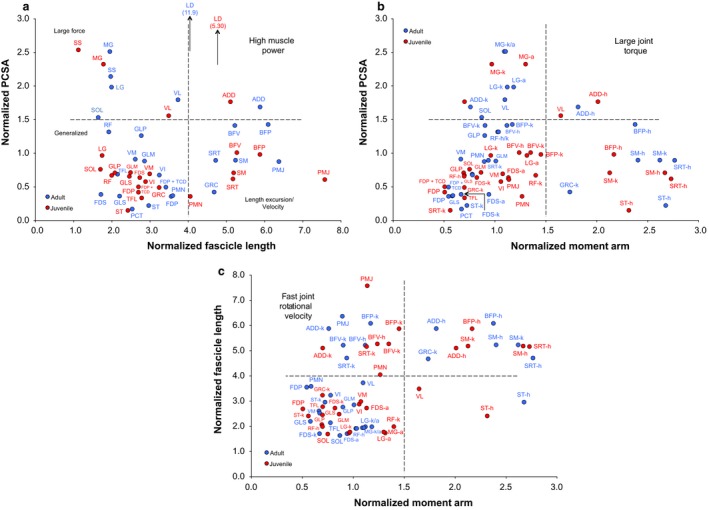Figure 3.

Muscle indices of relative power, joint torque, and joint rotational velocity of rabbit muscles. All architectural properties are normalized to body mass (M b) to standardize the presentation of data. (a) Normalized PCSA as a function of normalized fascicle length (LF). PCSA is scaled to and fascicle length to . (b) Normalized PCSA as a function of muscle moment arm (r m). Values for r m are scaled to . (c) Normalized LF as a function of normalized r m. Data points are means, with no error bars shown. Blue data points are adults (> 1.0 kg); red data points are juveniles (< 1.0 kg). Dashed lines divide plots into even quadrants. Muscles that produce high force (large PCSA) and shorten at high velocity (long LF) are capable of high power output (upper right); large PCSA and long r m are muscles capable of applying large joint torque (upper right); and long LF and short r m are muscles capable of fast joint rotational velocity (upper left). Muscle abbreviations are the same as those in Table 2. h, acting at hip joint; k, acting at knee joint; a, acting at ankle joint.
